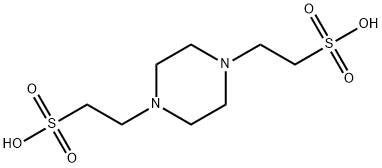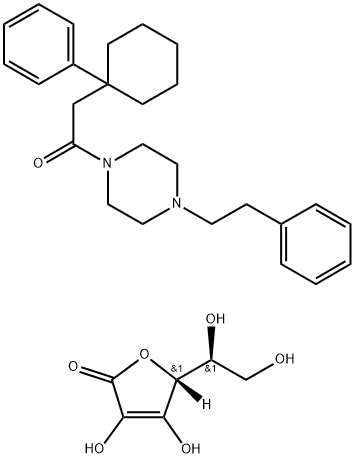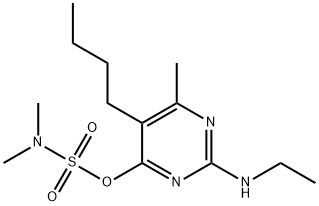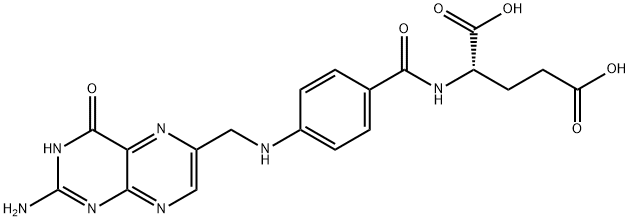1,4-Piperazinediethanesulfonic acid(PIPES) , forcellculture,≥99% , 5625-37-6
Synonym(s):
1,4-Piperazinediethanesulfonic acid;Piperazine-1,4-bis(2-ethanesulfonic acid);Piperazine-N,N′-bis(2-ethanesulfonic acid);PIPES
CAS NO.:5625-37-6
Empirical Formula: C8H18N2O6S2
Molecular Weight: 302.37
MDL number: MFCD00006159
EINECS: 227-057-6
| Pack Size | Price | Stock | Quantity |
| 25G | RMB48.80 | In Stock |
|
| 100G | RMB108.00 | In Stock |
|
| 500G | RMB374.40 | In Stock |
|
| 1KG | RMB799.20 | In Stock |
|
| 2.5kg | RMB1380.80 | In Stock |
|
| others | Enquire |
PRODUCT Properties
| Melting point: | >300 °C (lit.) |
| Density | 1.4983 (rough estimate) |
| refractive index | 1.6300 (estimate) |
| storage temp. | Sealed in dry,Room Temperature |
| solubility | 0.1 M NaOH: 0.25 g/mL, clear, colorless |
| form | Micro-Crystalline Powder |
| color | White |
| pka | 6.8(at 25℃) |
| PH Range | 6.1 - 7.5 |
| PH | 6.1-7.5 |
| Water Solubility | Soluble in water. |
| λmax | λ: 260 nm Amax: 0.055 λ: 280 nm Amax: 0.040 |
| Merck | 14,7479 |
| BRN | 817713 |
| InChIKey | XWGRYGKFRRLUQQ-UHFFFAOYSA-N |
| LogP | -2.7 at 20℃ |
| CAS DataBase Reference | 5625-37-6(CAS DataBase Reference) |
| EPA Substance Registry System | 1,4-Piperazinediethanesulfonic acid (5625-37-6) |
| Absorption | ≤0.1 at 260 in 1 M NaOH at 0.5M ≤0.1 at 280 in 1 M NaOH at 0.5M |
Description and Uses
PIPES is a member of the ethanesulfonic acid buffer series, first introduced by Good et al., developed to meet certain criteria: midrange pKa, maximum water solubility and minimum solubility in all other solvents, minimal salt effects, minimal change in pKa with temperature, chemically and enzymatically stable, minimal absorption in visible or UV spectral range and easily synthesized. Since its pKa at 37 °C is near physiological pH, PIPES has applications in cell culture work.
A buffering agent with a pKa near physiological pH.PIPES [piperazine-N,N′-bis(2-ethanesulfonic acid)] is frequently used as a buffering agent in biochemistry. It is an ethanesulfonic acid buffer developed by Good et al. in the 1960s. PIPES has a pKa near the physiological pH which makes it useful in cell culture work. It has been documented to minimize lipid loss when buffering glutaraldehyde histology in plant and animal tissues.
Additional forms available: PIPES, Sesquisodium Salt ; PIPES dipotassium salt; PIPES disodium salt; PIPES, Sodium Salt. Buffers can be prepared by adding a solution of base to PIPES free acid, titrating to the appropriate pH, or by mixing equimolar solutions of the monosodium salt and the disodium salt, titrating to the appropriate pH.
Safety
| Symbol(GHS) |  GHS07 |
| Signal word | Warning |
| Hazard statements | H315-H319-H335 |
| Precautionary statements | P261-P271-P280 |
| Hazard Codes | Xi |
| Risk Statements | 36/37/38 |
| Safety Statements | 22-24/25-37/39-26 |
| WGK Germany | 3 |
| TSCA | Yes |
| HS Code | 29335995 |





